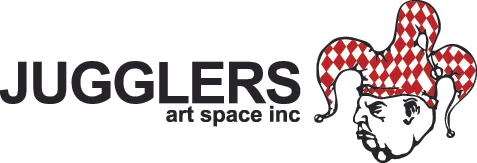The Importance of Drawing and the Marie Ellis Prize
/The Marie Ellis Prize is one of the few awards given to professional artists for their works in drawing. It is indeed a rarity in the today’s scene and yet one of the most important initiatives in Australian art.
Why do we need drawing? The immediate answer is that it is fast becoming a lost craft and that it cannot be expunged from society’s skillset, as it were. Yet many skills have been wiped out of practice, with no hint of mourning for the lost arts of butter churning, telegram composing or riverside clothes washing. There is a more profound reason, beyond simple traditionalism, that drawing must be kept alive.
During the late twentieth century there was a radical shift away from representation. Art, seemingly paradoxically, became anti-aesthetic. The painting on the wall became an emblem of an unnecessary critical distance: it could never invade the physical space of the viewer the way an object could. Not only drawing, but the ideology associated with the practice, fell out of fashion.
From the 1970s onwards, art’s new purpose was to perform upon its spectator. It was not enough to represent the surrounding world, as it must now find a place in that tangible and temporal reality. No longer a painting of cubes as in Picasso’s Ma Jolie but a physical cube in the gallery is in Tony Smith’s Die. No longer a painting of a chair, as by Van Gogh, but a chair to sit on, as by Joseph Beuys.
However, it is too easy to associate the non-representational with the direct. Would we see a pond the same way without Monet? Would we see the movement in a ballerina’s tutu without the flickering brushwork of Degas? Would we admire the beautiful woman across the street without the countless muses that fill galleries?
What was overlooked by the post-modernists’ assertion of the “real” is that art has a role in framing that reality from the outset. Put more simply, we cannot read the world around us without the prior knowledge of its representation. Drawing is then not simply a refined skill but a way of mediating, of framing, the world. Representation is not merely imitative of reality but makes up what is real around us.
Many artists in the show claim that, for them, drawing exudes a sense of authenticity. While this is a term held in a web of various meanings, I think drawing captures a particular type of artistic truth. Drawing not only celebrates line but the hand that drew it. The pleasure in the works is ultimately tracing the memory of the pencil, pen or now, computer mouse. In this way, the image cannot be separated from its creator. Drawing is then authentic in the way that installation cannot be. While a physical object may be more spatially and tangibly direct, it is un-composed, it holds little association with the artist. In a drawing, we see not only the object of the work but also the idiosyncrasy of its maker. We see the object processed by the artist: chewed up in the mind and spat out by the pen.
The winner, Jeremy Eden and runner up, William Platz (featured image above), of the Marie Ellis prize are emblematic of the two prominent means by which this authenticity is realised. Platz’s work consists of two panels of life drawing: the first a triptych of a man and the second a triptych of a woman. The nudes themselves are rather ordinary yet his innovation lies in the beautiful line with which he has moulded them. Shapes of the body twirl and coil. Gestural lines ooze from the figures such that the space they occupy becomes part of the flesh. Platz leaves his fingerprints on the canvas, allowing them to build up into an intrusive haze over the figures. The fingerprints act as residues of the artist himself. They remind the viewer of the hands, the fingers, the skin from which the artwork emerged. Platz’s work is raw, personal and leaves us to dwell not so much on the image but the chaos of ink that undoes it.
Eden’s work can be thought of as the inverse to Platz’s. His technique leaves no evidence of the hand. The work is extremely crisp and appears with the reality of a photograph. However, this is not to say that his work can be understood on first sight; in fact, it is the opposite. Interest lies in Eden’s highly ambiguous and uncanny image. The drawing shows Eden with a plastic-wrap around his head, an X of duct tape holding it in place. Unlike Platz’s spacious composition, Eden fills the entirety of the page with this figure. Suffocation then is not only depicted but generated in the image: the figure is trapped both in the plastic and in the paper frame. It is not an image to glance over. The strangeness of Eden’s subject matter dislocates our prior processes of seeing. It takes a few moments to realise the work is in fact a portrait. Slowly and carefully the horror of the image takes its form.
The works in the show vary so much in technique, scale and genre that it is hard to find a constant thread between them. Minimal ink sketches, softly shaded landscapes and even collage feature in the finalists’ exhibition. I believe what connects all these works lies in the nature of drawing itself. Each artist has re-expressed the objective to create something intriguingly subjective. In each drawing exists some fragment of the artist.
- Article & Review by Sophie Rose

